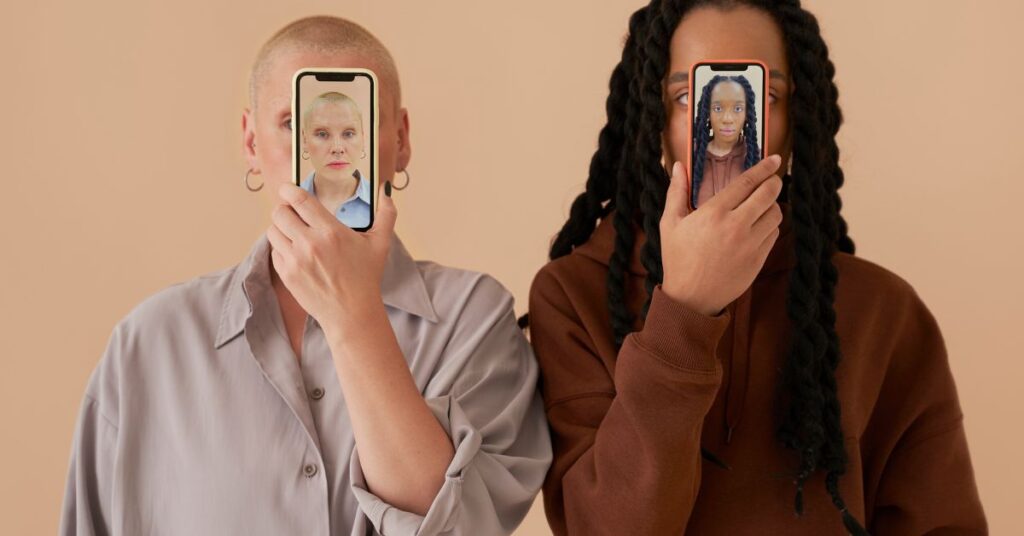In a world where notifications buzz relentlessly and social media feeds flow like an endless river, emotional landscapes are shifting beneath our feet. The concept of being “Inside Out 2 Glued To Phone” takes on a new meaning as we navigate the complexities of feelings in this digital age. It’s astounding how deeply technology influences our emotions—shaping not only how we connect but also how we experience joy, sadness, and everything in between. As screens light up our faces, they can simultaneously illuminate paths to connection or cast shadows of loneliness. Let’s delve into the intriguing relationship between technology and our emotions, revealing both its charms and challenges as we explore what it means to be glued to our phones today.
How technology has changed the way we communicate and express emotions
Technology has revolutionized communication, transforming the way we share our emotions. Text messages and emojis have become our primary means of expression. A simple smiley face can convey what words sometimes fail to capture.
Gone are the days of handwritten letters filled with heartfelt sentiments. Today, a quick tap on a screen can send a message within seconds. Yet, this convenience often dilutes emotional depth.
Video calls allow us to see loved ones from miles away, bridging physical gaps while still lacking the warmth of in-person interactions. The nuances of body language and tone can be lost in translation.
Social media platforms provide an outlet for sharing feelings publicly but also invite scrutiny and comparison. Authenticity may suffer when curated images dominate feeds, turning genuine expressions into mere performances for likes.
As we navigate these digital channels, it becomes crucial to reflect on how they shape our connections and emotional landscapes.
The addictive nature of social media and its effect on mental health
Social media is a double-edged sword. It connects us, yet can also tether us to our screens in unhealthy ways. The allure of constant notifications and likes creates an addictive cycle that’s hard to break.
Scrolling through feeds becomes a part of daily life. Each “ping” releases dopamine, making users crave more engagement. This behavior often overshadows real-life interactions.
Mental health struggles are rising as social media use increases. Users may experience anxiety when comparing their lives to others’ curated posts. This fosters feelings of inadequacy and discontent.
Moreover, the pressure to present a perfect image can lead people down a rabbit hole of self-doubt. Likes become validations that many seek, often at the expense of their well-being.
Recognizing this pattern is essential for mental clarity and emotional stability in an age dominated by digital connection.
The role of technology in creating a constant state of comparison and FOMO (fear of missing out)
Technology has transformed how we perceive ourselves and others. Social media platforms are designed to showcase highlights, often leading us down a rabbit hole of comparison. Scrolling through curated feeds, it’s easy to feel like everyone else is living their best life while we miss out.
The constant barrage of updates amplifies the fear of missing out (FOMO). We see friends attending events, embarking on adventures, or achieving milestones. Each notification can trigger feelings of inadequacy or envy.
This relentless cycle fosters anxiety and dissatisfaction. Instead of celebrating our own journeys, we become fixated on what others are doing. The pressure to keep up shifts our focus from genuine connections to superficial validation.
In this digital landscape, self-worth often becomes intertwined with online presence. It’s crucial to recognize these patterns and challenge the narratives that technology perpetuates in our lives.
How technology can contribute to feelings of isolation and loneliness
Technology offers unparalleled connectivity, yet it can also foster deep feelings of isolation. Social media creates an illusion of togetherness while keeping us physically apart.
Scrolling through curated lives and smiling faces often leads to a sense of detachment. We may feel more connected than ever, but that connection is often superficial.
Digital interactions lack the warmth of face-to-face conversations. A text or comment can’t replace the comfort found in shared laughter or a genuine embrace.
The constant buzz from notifications pulls our attention away from meaningful relationships. Instead of engaging with those around us, we find ourselves glued to our screens.
In this digital landscape, loneliness lurks even in crowded virtual spaces. The paradox is stark: as we connect online, we risk losing touch with what truly matters—real human connections.
Strategies for finding balance and managing emotions in a digital age
Finding balance in a tech-driven world requires intentional habits. Start by setting boundaries around screen time. Allocate specific hours for social media and stick to them.
Mindfulness practices can also help. Engage in activities like meditation or journaling, allowing your mind to reset away from digital distractions. These moments of reflection can deepen your emotional awareness.
Digital detoxes are powerful too. Consider unplugging for a day or even just an hour each week. Use that time to connect with nature, read a book, or enjoy face-to-face conversations.
Engaging with supportive communities online can create positive connections without the pressure of constant comparison. Seek out groups focused on interests rather than popularity metrics.
Most importantly, prioritize self-care routines that nurture your mental well-being—exercise, hobbies, and quality sleep matter more than likes and shares do.
Conclusion: Embracing technology without sacrificing
Finding a balance in our digital lives is essential. Technology can enrich our experiences and enhance communication, but it also poses challenges to our emotional well-being. It’s vital to be aware of the effects that constant connectivity has on us.
We must embrace technology mindfully. Setting boundaries around device usage can lead to healthier interactions both online and offline. Engaging with loved ones face-to-face fosters deeper connections than any text or social media post ever could.
Creating tech-free zones, such as during meals or before bedtime, helps break the cycle of dependency on our devices. By prioritizing real-life relationships over virtual validation, we can combat feelings of loneliness and isolation.
Moreover, practicing gratitude for what we have rather than comparing ourselves to others online promotes a positive mindset. Awareness is key; recognizing moments when technology starts dictating emotions allows us to take steps back toward balance.
Living in a world where we’re “Inside Out 2 Glued To Phone” doesn’t have to mean sacrificing genuine emotional experiences. With mindfulness and intentionality, we can navigate this digital age while nurturing our mental health and well-being effectively.






